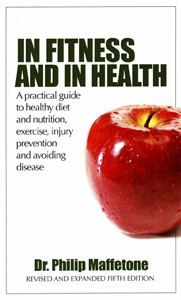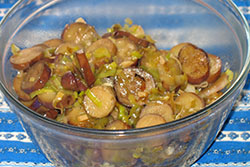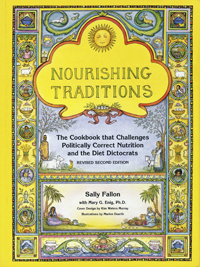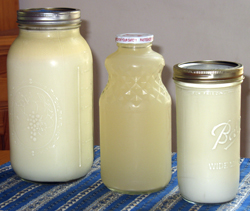I’d been yoyo-ing down and up the same 10 pounds for several years. And they were the wrong 10 pounds – the ones between . . . a high number and a higher number.
The way it worked for me was this: I’d swim my way from 300 meters up to 800 meters and loose 10 pounds. Then I’d get sick. Sick enough that trips to the gym weren’t an option for 2 weeks (or more). Because I get injured easily, that meant my workout fell back to 500 meters. Or less. And my weight crept up.
I didn’t know what to do about it. All my reading indicated that diets don’t work. Were worse than not working: after you lose 15 pounds, you gain back 30.
So, what should I do? I was carrying an extra 35 pounds – ever since the “change of life” – and I did not like it.
My habit of browsing for new non-fiction was to come to my rescue. This time on Amazon, rather than at the library, I stumbled upon Philip Maffetone’s In Fitness and In Health. The reviews were impressive, but more importantly they contained nuggets of information that dovetailed with other myth-busting revelations about food.
I purchased the book.
 Well . . . Dr. Maffetone seemed to be missing at least a few crucial bits of knowledge, but not the obvious ones. In fact, he toed the politically correct nutritional line repeated by the media a little too rigorously, in my view. But there was some good stuff in his book. One chapter in particular was a gem. That’s the one I want to tell you about: “The Two-Week Test.”
Well . . . Dr. Maffetone seemed to be missing at least a few crucial bits of knowledge, but not the obvious ones. In fact, he toed the politically correct nutritional line repeated by the media a little too rigorously, in my view. But there was some good stuff in his book. One chapter in particular was a gem. That’s the one I want to tell you about: “The Two-Week Test.”
This is what it says: the high-carb foods that most modern, western people eat by default are making us sick, but you can test the idea yourself in just 2 weeks. Find out!
I liked that 2 weeks part of his message. I figured I could stand anything for a mere half month. Why not try it?
Now . . . should I tell you what I did first? Or should I tell you the results?
Results. Definitely, results.
One result was really odd. I discovered that bananas and me make a poor pairing! All my joints flared into arthritic inflammation when I ate a banana at the end of my 2 weeks. But you surely care little about me and bananas. Most likely you and bananas get along just fine. Dr. Maffetone emphasizes that everyone’s body is a little bit different (or a lot) from everyone else’s. That’s why you need to test what works for you.
So, what about the important results? There were three.
I simply felt better. That’s rather unquantifiable and general. But, believe me, it’s important. The difference between okay and really well, while subjective, is unmistakable.
I had more energy! This was dramatic. I had too many days when I was dragging, fighting lethargy, never peppy. After my 2 weeks (plus the addition of coconut oil to my diet), I had stamina. I was even peppy at times. Wow! I liked it!
And . . . drum roll . . . I lost 3 pounds. Without counting calories, measuring portions, or feeling hungry.
So, what did I do?
First, after the 2 weeks, I used what I had learned to adjust the types of food I ate. With the result that I lost 25 pounds over the next 6 months. Also without calorie-counting, portion-weighing, or feeling hungry. Sounds like an infomercial, but it’s just me and my experience.
What about those 2 weeks? What did I do during the interval of testing? Here are the rules I followed.
Do eat:
* eggs, cheese, heavy cream, sour cream
* meat, including beef, turkey, chicken, lamb, fish, shellfish
* vegetable juices such as tomato, V-8, or carrot
* water
* vegetables, cooked or raw – but no corn, no potatoes
* nuts, seeds, nut butters
* oil, vinegar, mayonnaise, salsa, mustard, herbs, spices
* sea salt (unless you’re sodium sensitive)
* coffee, tea (if you normally drink it)
Do not eat any:
* bread, pasta, pancakes, cereal, muffins, chips, crackers, rice cakes, grains
* sweets, including foods containing sugar such as ketchup, honey, packaged foods
(read labels!)
* fruits and fruit juice
* processed meats such as deli meats and hot dogs (many have sugar in them)
* potatoes, corn, rice, beans
* milk, yogurt, lighter creams
* energy bars, energy drinks, “healthy” snacks
* soda, even diet soda
Be certain you do not go hungry. Very important. Stock your fridge and pantry with lots of allowed foods.
Some meal suggestions:
Breakfast
* omelets, plain or filled with cheese, meat, and/or vegetables
* scrambled eggs with guacamole, sour cream, and salsa
* poached eggs with spinach or asparagus and hollandaise or cream sauce
* boiled eggs with bacon or other meats
* souffles
Salads
* leaf lettuce, meats, cheeses, eggs
* spinach, bacon, eggs, anchovies
* romaine, eggs, parmesan, anchovies or sardines
* chicken, celery, onion, mayonnaise
* tuna, apple, cilantro, onion, mayonnaise
* shrimp, cucumber, parsley, onion, mayonnaise
* salmon, celery, onion, dill, mayonnaise
Salad Dressings
* extra-virgin olive oil and vinegar, plain or with sea salt and herbs
* creamy made with heavy cream, mayonnaise, garlic, and herbs
Lunch and Dinner
* pot roast with onions, carrots, turnips, celery
* roast chicken stuffed with fennel bulb, carrots, celery
* chili made with ground meat and vegetables: eggplant, onions, celery, peppers, zucchini, tomatoes, herbs (no beans!)
* steak and eggs
* baked chicken breasts with sauce, salad on the side
* baked fish with sauce, salad on the side
* grilled tuna with lettuce, green peppers, black olives, dressing
Sauces
* melted butter
* cream sauce (simmer heavy cream with mustard, curry powder,
or cayenne pepper – serve over eggs, chicken, vegetables)
* tomato sauce (serve over fish, meat, or vegetables)
Snacks (important to avoid going hungry!)
* hard-boiled eggs
* slices of meat or cheese wrapped in lettuce to make a roll-up
* vegetable juice
* almonds, cashews, pecans
* celery filled with cream cheese or almond butter
* guacamole with vegetable sticks
* leftovers from a meal
At the end of the 2 weeks, evaluate how you feel. Then it’s time to start adding carbohydrates back into your meals. But don’t just lunge forward. There’s still more learning to be had. Add single servings of natural, unprocessed carbohydrates at every other meal. If you eat them back-to-back, you’ll blur any reactions you have enough to miss them. And the meal in between test meals must follow the guidelines you used to clear your system. Foods to try might be: apple, plain yogurt with a little honey, brown rice, sweet potatoes, lentils, sprouted-grain breads. Notice, notice, notice how you feel after each addition.
So what information was Dr. Maffetone missing? There were two critical pieces. One I’ll share in a future post when I present a book that covers the topic in clear and extensive depth. I hear you groaning. Yes, positively groaning. Sorry. Sorry. But it really isn’t a subject to treat at the tail end of a post. Promise!
The missing bit I will share is simple: the most commonly eaten polyunsaturated oils are extracted at high temperatures. The process turns them rancid, destroys their nutrients, and creates free radicals. Dangerous chemicals are used to scrub away the awful odor, and residues of the chemicals remain in the oil. Basically, they’re a nasty cocktail to pour into a finely tuned human body! Think twice about that corn oil or that safflower oil or that canola oil!
So where am I now, 14 months after I read In Fitness and In Health? I’ve repeated the 2-week test once, just to tune up. I’d like to lose another 10 pounds, but I’ve maintained that 25-pound loss, even after a seriously broken bone in my foot that kept me bed-ridden for 4 months! I’m pretty pleased. No more yoyo-ing.
What about you? Should you try the 2-week test? Probably not just on my say-so. I’m a writer, not a doctor or a nutritionist. But I do have recommendations. Learn more about food. Question the same-old, same-old we hear from the media and from the medical establishment. There are some dangerously wrong things repeated over and over again. Seek out some different answers! Better health is possible.
Those of you with food and health successes to report, consider sharing them here in the comments. Maybe we can all learn new questions to ask.
In Fitness and In Health is now out of print. Amazon sells it through third party vendors, if you’re angling to acquire a copy. Evidently much of the information has been incorporated into a new book by Dr. Maffetone: The Big Book of Health and Fitness. Some links:
In Fitness and In Health through Amazon
The Big Book of Health and Fitness at Amazon
The Big Book of Health and Fitness at B&N
Update: I’ve now written not just one post on the “book that covers the topic in clear and extensive depth” about the “information Dr. Maffetone was missing,” but three! Each on a different book. You can find them at Test first, then conclude!, Butter and Cream and Coconut, Oh My!, and Why Seed Oils Are Dangerous. And one more post on my continuing nutritional education appears at Yogurt & Kefir & Koumiss, Oh My!
 I hate cooking.
I hate cooking. Ingredients
Ingredients


